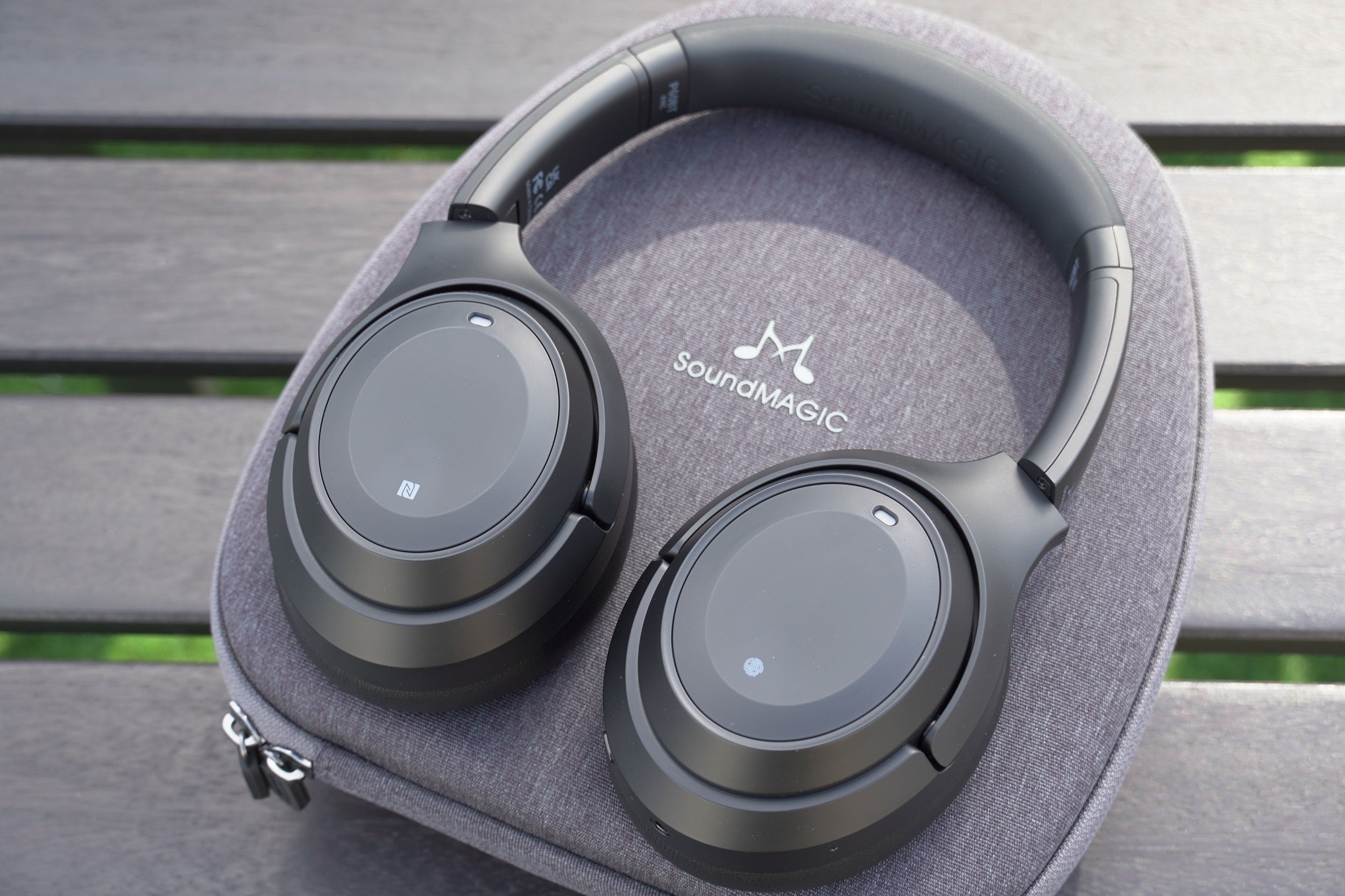Apple AirPods Max Review
Are Apple's high-end ANC headphones worth the staggering price?
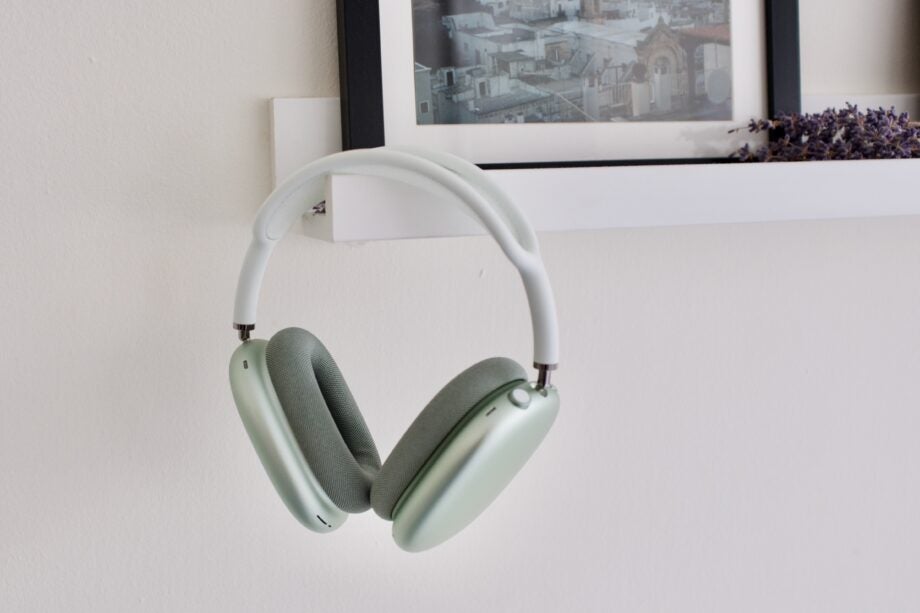

Verdict
AirPods Max are a luxury pair of headphones aimed solely at those who entrench themselves fully in Apple’s ever-expanding ecosystem of content.
Pros
- Wonderful, versatile sound
- Many clever design elements and strong build quality
- Spatial audio can be immersive for the apps that support it
- Strong connection to the Apple ecosystem
Cons
- Lack of ‘off’ button is annoying
- The included case is bad in just about every way
- Heavy and can’t be folded down
- The high price can’t be ignored
Availability
- UKRRP: £549
- USARRP: $549
- EuropeRRP: €629
- CanadaRRP: CA$779
- AustraliaRRP: AU$899
Key Features
- Excellent iOS integrationEasily connects to iOS devices and there’s quick sharing between support Macs and iPhones
- Adaptive ANCThe ANC (active noise cancellation) changes depending on your surroundings and does a great job blocking out surrounding noise
- Comfortable designMemory foam earcups and a mesh band give excellent comfort and support
Introduction
The AirPods Max remain Apple’s premium over-ear offering in the headphone space and I have now been using them since they were announced in late 2020.
Criticised heavily for a high starting price upon release, the AirPods Max remain one of the more niche products in Apple’s ever-growing range of products.
There’s also more competition than ever in this space, with the Sony WH-1000XM5 recently arriving and undercutting the AirPods Max’s starting price comfortably.
But Apple’s over-ear cans shouldn’t be instantly dismissed. In fact, once you look past some of the quirks, they remain some of the best headphones around. Here’s why.
Design
- Clean break from typical over-ear design
- Very unique design with great-feeling materials
- Multiple colours available with replaceable earcups
- The metal cups are heavy and the AirPods Max don’t easily fold down
The AirPods Max look like no other consumer headphone I have ever worn. They’re unmistakably Apple, which is for the best in some ways and to their detriment in others.
Early rumours suggested Apple was going to go completely go off-piste with its first pair of over-ear headphones, possibly adding in reversible earcups and customisation on a similar scale to the Apple Watch. This hasn’t quite come to pass, but the AirPods Max are still unique in many ways.
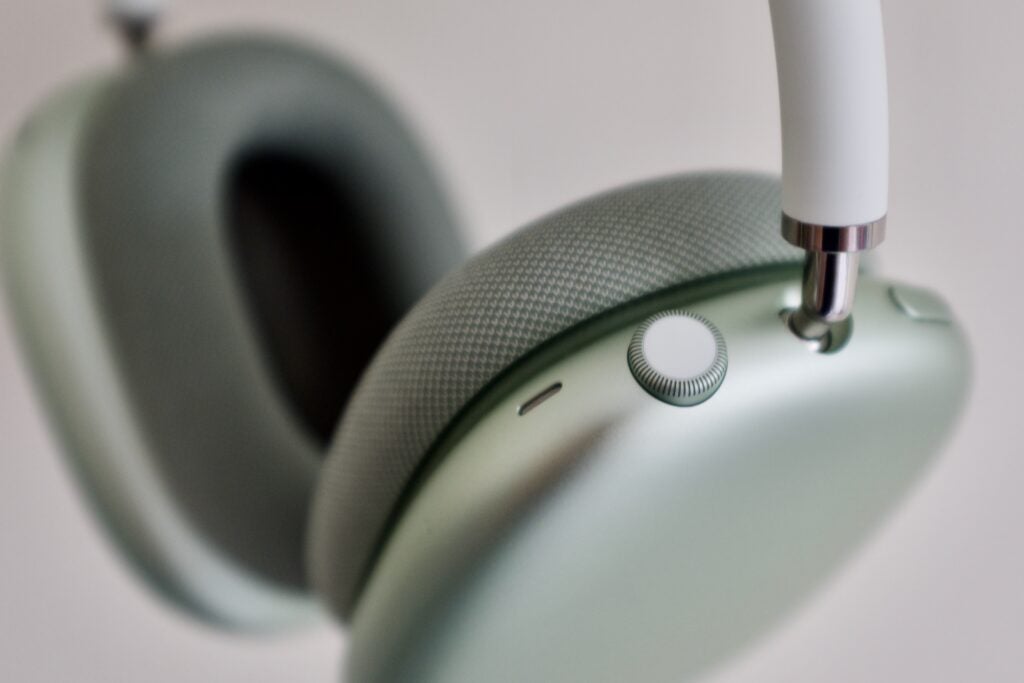
They’re striking to look at and stand out far more than a pair of Bose NC 700s or Sony WH-1000XM5s. Smooth, rounded metal cups are paired with a mesh-covered band and a dial that looks like it’s been plucked right off the Apple Watch Series 7. I wasn’t convinced at first, but after more than a year of wearing them pretty much every day, I am thoroughly converted – at least when it comes to the style.
However, what I have noticed during my time wearing the AirPods Max is that a striking look isn’t always best for a pair of headphones you wear everywhere. They stand out in the street, even more so with the green or pink options. Obviously this is intended, but I am not sure how comfortable I am wearing such an obvious pair of headphones wherever I go.
Still, a lot of thought has been put into the headphones’ design and importantly how they’re different from ‘cheaper’ best headphone options.
Over-ears typically put the weight on your head with the headband. This means the cups can be lighter, however I often find that after a while the top of your head can ache. With the AirPods Max, the weight is distributed across the headband to the point where I can barely feel it on my head at all. Even after hours upon hours, the AirPods Max still feel comfortable.
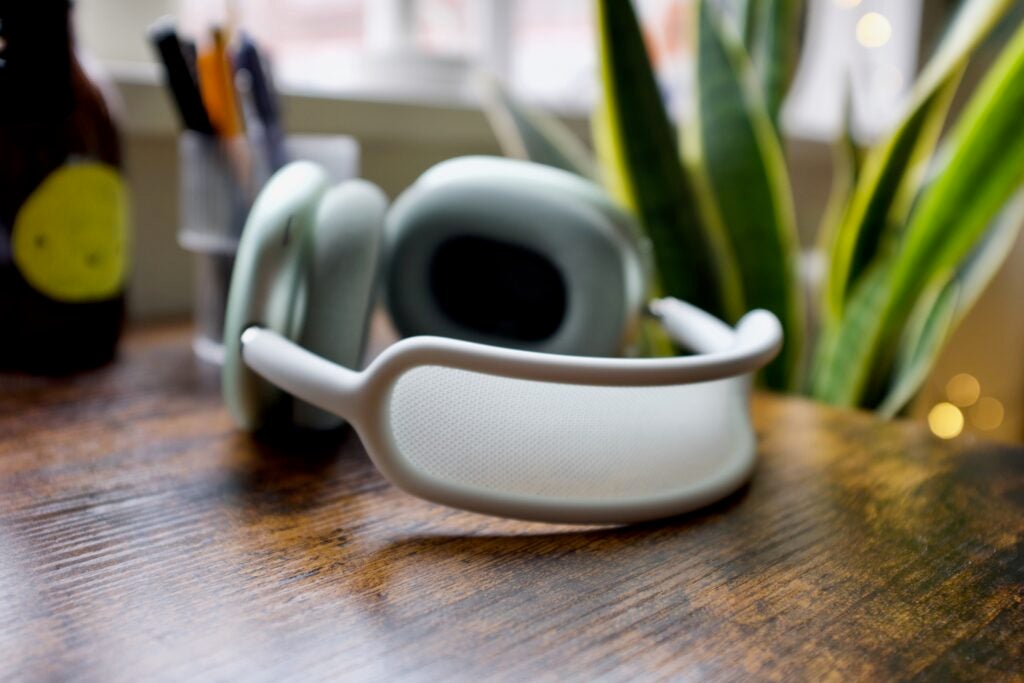
This certainly wasn’t something I expected as I was shocked at how heavy they were when taking them out of the box for the first time. At 385g, they are far heavier than the Sony WH-1000XM5 or Bose QC 45 and you can tell. There’s no IP rating so don’t expect them to fend off wet weather or wear them during exercise.
Connecting the two hefty metal cups to the headband are stainless steel telescoping arms that slide smoothly up and down with just enough friction to keep them stable. These are then covered in a mesh fabric not too dissimilar to the finish of the HomePod Mini. Like the cups, it looks quirky at first, but you’ll quickly get used to it and I wouldn’t be surprised to see an influx of similar-looking headphones.
The memory foam earcups are supremely comfortable as well, and don’t get sweaty after long listening periods like their leather counterparts. They also pop off easily (though stay in place thanks to magnets), so they can be washed or even replaced. Apple is selling replacement earcups for a rather staggering £75/$69. During my time with the AirPods Max the pads haven’t gotten dirty at all and still as good as they when I first took them out of the box.
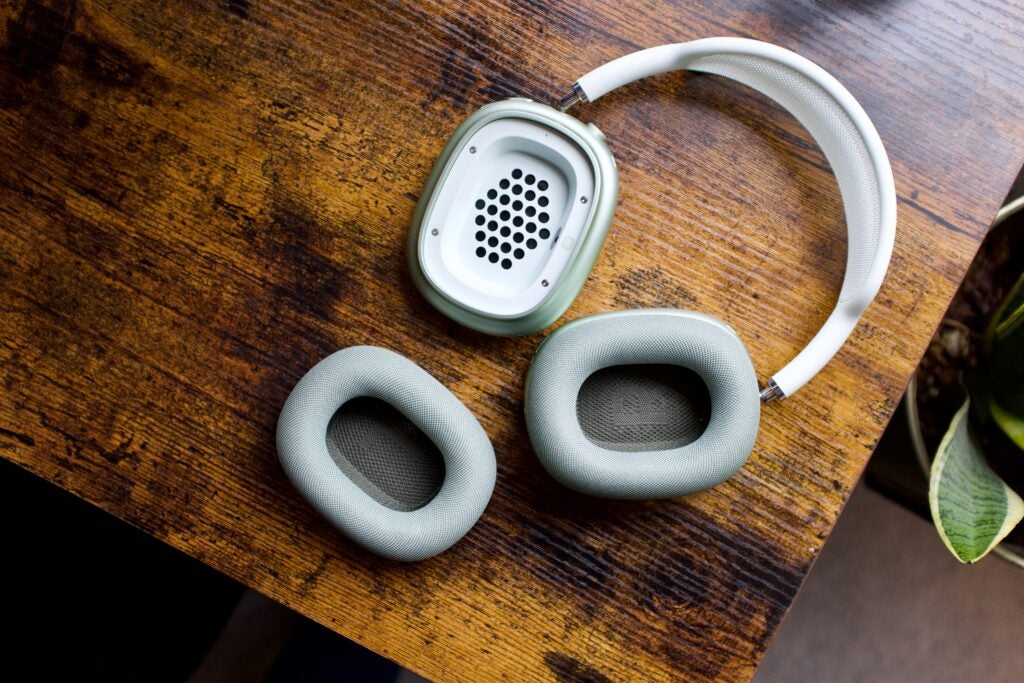
Another design decision I really appreciate is the use of proper physical buttons rather than gesture swipes for skipping tracks, changing the volume and so on.
On the top of the right earcup there’s a larger version of the Apple Watch’s Digital Crown. Twisting this raises or lowers the volume, while pressing down play/pause and moves through tracks. It works tremendously well, and I always value that physical, precise feedback over swipes.
Next to the crown is a button for switching between active noise cancellation and Transparency modes. The latter lets in some background sound, so you’re not completely cut off. There’s also a Lightning port for charging and routing audio through a Lightning to 3.5mm adapter which, of course, is not included. If you want to listen with a wired connection you’ll need the £35/$35 audio adapter.
For a pair of headphones that cost this much, not including such a basic cable in the box seems even more ridiculous than not including a charger with a phone that costs over a grand. Alongside the AirPods Max I’ve tried the Twelve South AirFly Pro, which is a handy tool for connecting wireless-only cans like this to devices with a 3.5mm jack. It works well and is great for long distance travel.
If I did have one request for either the next model or a cheaper ‘Sport’ model, it would be for more portability. Not only are the AirPods Max quite heavy, but their design isn’t collapsible. Sony has followed this trend with its XM5s and it does mean they take up a lot more room in a bag.
Even worse is the meme-worthy ‘Smart Case’, which looks like a cross between a bra and a handbag. I might have said the AirPods Max themselves are some of Apple’s best design work as of late, but this case is right at the other end of the scale.
It offers zero protection to the headband – which I see as being the most delicate part thanks to that mesh covering, and doesn’t even completely cover the cups. There are numerous third-party alternatives popping up on Amazon and elsewhere (this Waterfield one looks quite nice), and I’d suggest picking up something other than the default option if you want proper protection.
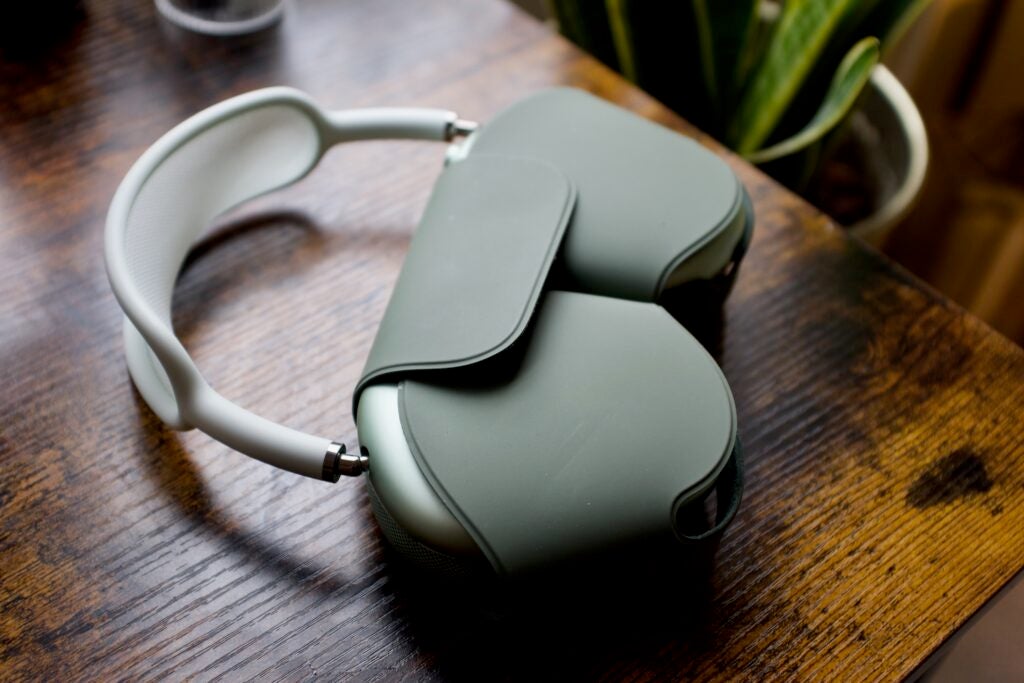
What makes the case even more annoying is that you do need it, as when you pop the cans in the case they’re put into a suspended state and then eventually deep sleep. Without it, they stay on longer and drain the battery quicker. It’s peculiar there isn’t a physical on/off button anywhere.
Features
- Some of the best ANC around and spatial smarts
- Adaptive ANC is fantastic, even if you don’t have too much control over it
- Spatial audio gives a surround effect in supported apps
- Like other AirPods, they’re very much tied to Apple’s ecosystem and probably aren’t for Android users
While I’ll give plenty of time to the AirPods Max’s audio later, there’s a lot more going on with its features. You’ve got some of the best ANC around, excellent microphones and clever Spatial Audio features that are genuinely impressive for movies.
As with previous AirPods, you’re only going to get the best experience if you’re deep into the Apple ecosystem. While there’s support for Android phones and other Bluetooth devices, you miss out on a lot. Spatial Audio and quick device switching are iOS only, and Apple has designed the Max to play best with iPhones and iPads.
Spatial Audio isn’t exclusive to the AirPods Max and it’s available on the AirPods Pro, AirPods 3 and natively on newer Mac products, like the Studio Display.
In basic terms, it’s a surround sound effect that combines head tracking with Dolby 5.1, 7.1 and Atmos soundtracks, producing a much grander, wider feel. The Mandalorian on Disney Plus, for example, is a stellar example of the immersive quality of Spatial Audio and things feel flat in comparison when you’re watching content from an app that doesn’t support it.
And that’s the biggest problem really – Spatial Audio still has slim support even in mid-2022. Disney Plus is the biggest third-party service to use it and it’s great on Apple TV Plus content of course.
Just like big competition from Bose and Sony, the AirPods Max have seriously impressive active noise cancellation (ANC). I’d go as far as to say Apple’s interpretation is marginally better than the NC 700 and up there with the WH-1000XM5 – however, they’re much cheaper and the difference is far from worth the extra outlay.
I’ve come to appreciate ANC even more working from home. Living in a large block of flats, the noise cancellation blocks out the consistent low-end drone from flat refurbishments above and my partner’s Zoom meetings in the room next door.
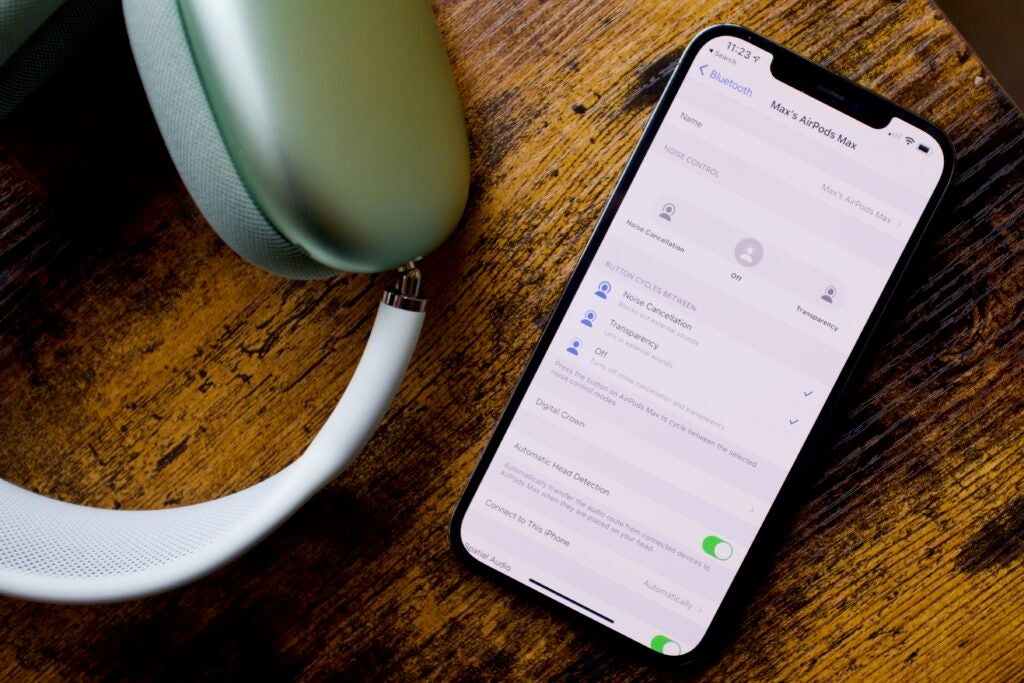
While there isn’t in-depth control of the ANC levels, Apple has said the three outward-facing mics and one inside the earcup help to constantly alter the level of noise cancellation depending on your environment. These adaptive skills seem to work too, as the ANC cranks up on a rumbling train and down again so you can at least hear a car approaching as you cross the road.
Another triumph is the Transparency Mode, enabled by a press of the secondary button. In this mode, you can hear what’s around you or have a chat without removing the AirPods Max.
Unlike other similar modes on the competition that can sound robotic or artificial, the Max’s Transparency Mode is perfectly natural and almost sounds like you don’t have the headphones on at all.
If you’re connecting to an iOS device then the process is simple: bring the AirPods Max close to your iOS device, accept the message that pops up and you’re done. Connecting them to one device also adds them to every other associated device in your iCloud account, so you only need to do this once.
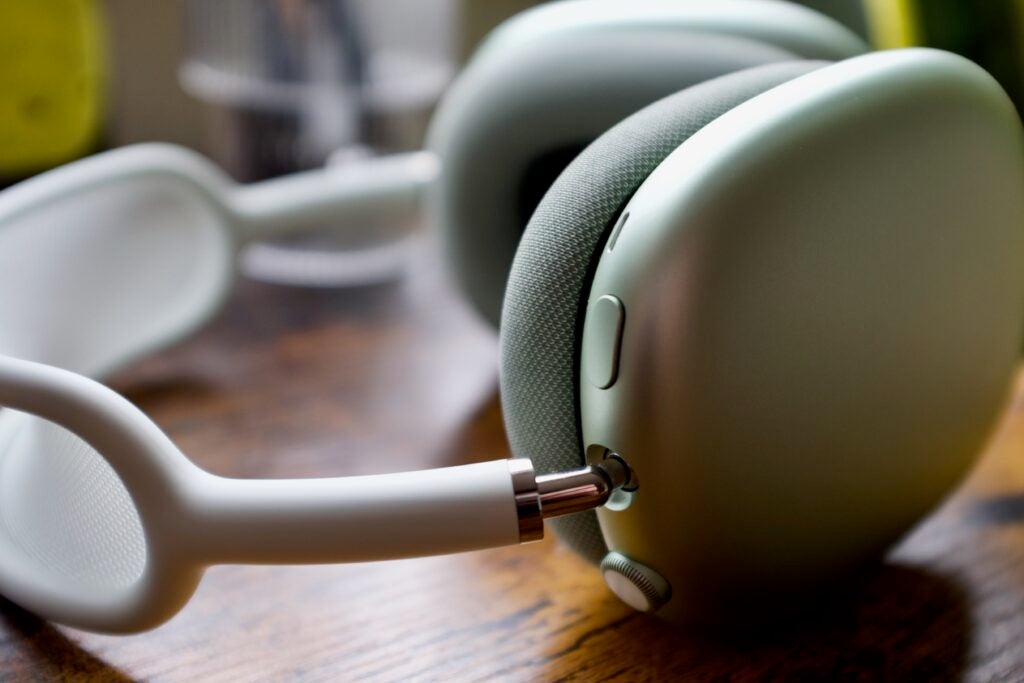
You can also, most of the time, easily switch between multiple Apple devices without connecting and reconnecting. It’s mostly seamless: start listening on your Mac, pause that and start playing on your iPhone 13 Pro and the headphones understand. Yet, there have been times where it hasn’t worked at all and I haven’t been able to shift music to the AirPods Max without a full reconnect.
Battery life isn’t class-leading and due to the oddities with various power states – I have been annoyed at how quickly the headphones drain when not in use, especially if you don’t use them for a few days. If you keep them in the case they won’t drain as fast, but this seems like an annoying quirk.
In terms of pure battery life, my tests match up with Apple’s claim of 20 hours. That’s below Sony’s latest flagship pair which can hit 30 hours, but still more than enough for most and good enough for plenty of long flights or journeys.
Charging is done via a Lightning port, which might annoy some hoping these would employ the more ubiquitous USB-C port Apple has started using for MacBooks and high-end iPads. For me, Lightning here is still the right choice as it means one cable can charge both your iPhone and AirPods. You do actually need that cable though, as unlike the AirPods Pro there’s no wireless charging support.
Sound quality
- Great audio whatever you’re listening too but not that much better than the rivals
- Excellent sound in all genres of music
- Computational skills to dynamically adjust the sound
Whatever they look like and however many extra bells and whistles they have; you can only sell a £549/$549 pair of headphones if they sound amazing. After over a year of listening to all sorts of music, movies, TV shows, podcasts and audiobooks I am very impressed.
While I wouldn’t say these are worth the extra price alone over Bose and Sony just for sound quality, there’s no doubting these are excellent sounding headphones that have fantastic versatility and few, if any, weaknesses.
The custom-made 40mm driver works in tandem with dual H1 chips and Adaptive EQ to alter the low and mid frequencies in a computational manner. These EQ adjustments take into account the fit of the headphones and how good the seal is against your head. Apple, along with Google, has pioneered ‘computational photography’ in its recent phones and it seems to be doing something similar here.
It’s important to note these are primarily designed for those who listen to music through streaming services like Apple Music and Spotify, or from downloaded iTunes content. You won’t find support for High-Res Audio codecs (even the ones supported within Apple Music) and as I mentioned above, you need to splash out more cash if you want to plug these directly into a wired source.
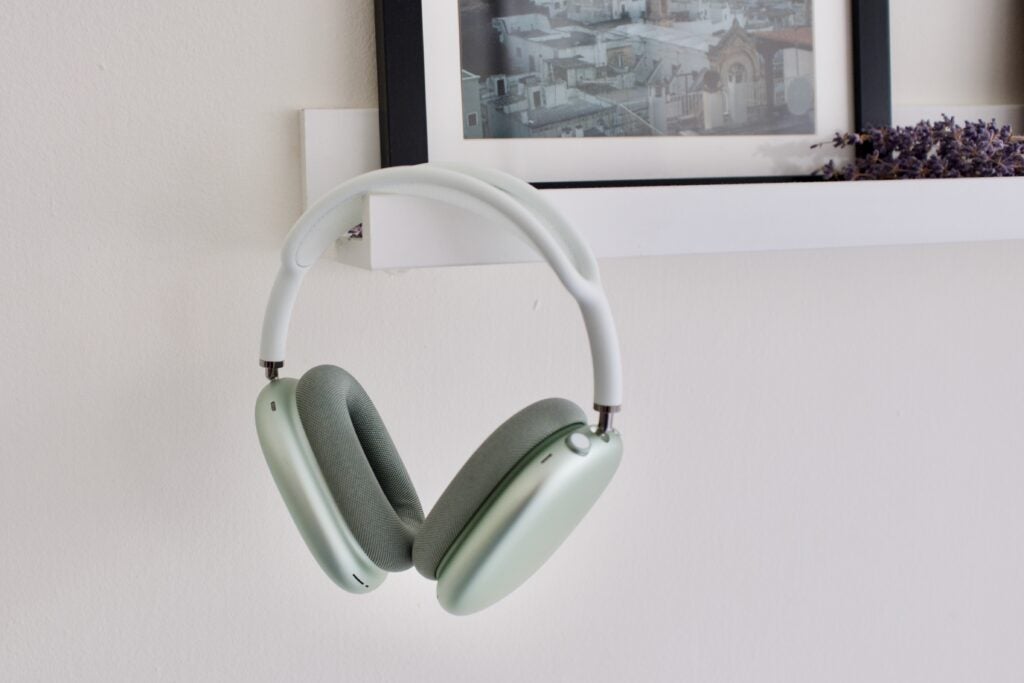
AirPods Max pack a balanced sound with an outstanding sense of versatility. They don’t stand out when playing back one genre, instead impressing with a wide range of songs.
There’s plenty of bass, which comes through stunningly in the ear shaking Xanny by Billie Eilish. This is such a bass-heavy track that it sounds downright bad on anything that can’t handle it. Switch to something more guitar-led and the results remain impressive, with clean vocals and intricate details picked out.
I was consistently impressed that higher frequencies never sounded harsh and booming soundtracks, like Hans Zimmer’s Inception score, kept all the immersive qualities I would expect. Pump the volume right up and you’ll never hear any distortion, something that’s very common on Apple’s AirPods Pro.
Spatial Audio was only present in video apps when the AirPods Max launched, however now it works for music too if you’re listening through Apple Music. The effect is hit and miss and really depends on how the track was mastered as to the results you’ll get. Billie Eilish’s ‘Bad Guy, for instance, sounds excellent in Spatial Audio – with the vocals accurately coming from different heights and adding an extra layer of immersion.
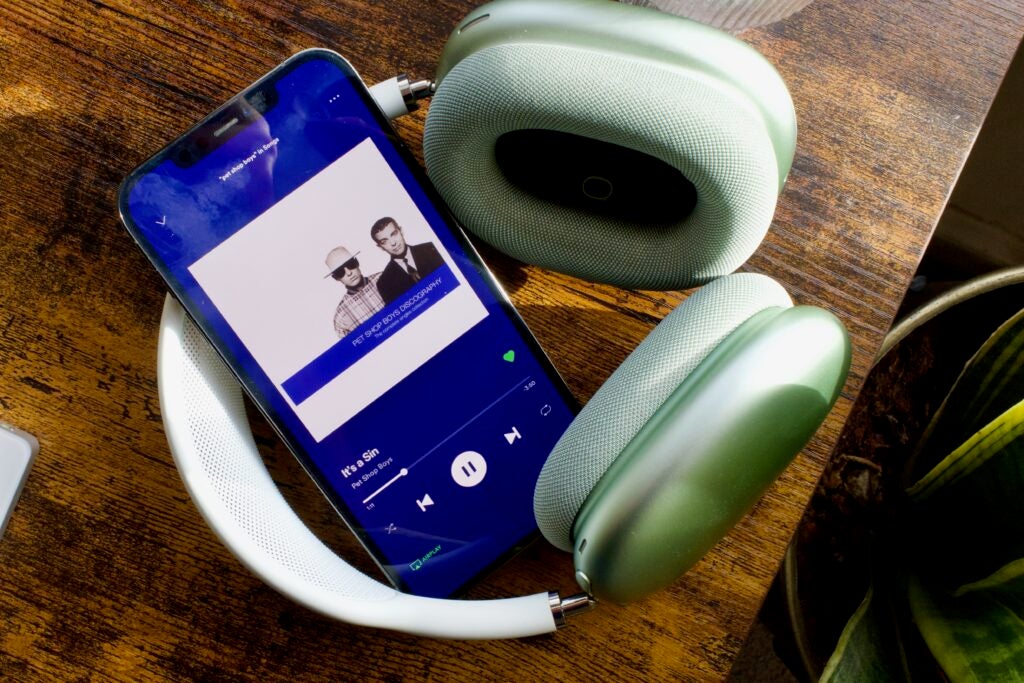
While I can’t say enough good things about the audio, it’s hard to really say these are definitively better than Sony’s excellent WH-1000XM4s or the more recent XM5s. Moving between all the pairs, all impress consistently and the differences are minimal. Some songs I think sound better on the AirPods, and others with the Sony.
Latest deals
Should you buy it?
You have all the Apple tech and are deep in the ecosystem While they work with Android and other Bluetooth devices, the best experience is with a whole host of other Apple gear. One pairing connects to all your devices, you get Spatial Audio, audio sharing and far more options.
You want a light, easily portable pair of headphones They don’t feel heavy when you’re wearing them but the AirPods Max are a bulky pair of headphones. It doesn’t help that they can’t be folded and the included case can only be described as awful.
Final Thoughts
The AirPods Max remain an excellent sounding set of headphones that still have some of the best ANC around. Spatial Audio is better than ever thanks to its inclusion in Apple Music and the industrial design has lasted well since launch.
The headphones remain an expensive option, even with a scattering of price cuts and reductions often available, and some of the design flaws have become even more obvious since launch. The lack of a proper ‘off’ button, for example, is constant pain and the awkward carry case is still among the worst I have ever used.
Apple doesn’t seem like it is on the cusp of launching AirPods Max 2 so there’s still plenty of life left in these cans, even if the completion is now much stronger with the arrival of the Sony XM5s.
How we test
We test all headphones we review thoroughly over an extended period of time. We use industry standard tests to compare features properly. We’ll always tell you what we find. We never, ever, accept money to review a product.
Find out more about how we test in our ethics policy.
Tested for over a year
Tested with real world use
Tested with a range music genres
FAQs
While they do work best with iOS and macOS devices, you can connect these up to any Bluetooth compatible item including Android phones. You will miss out on features like Spatial Audio, though.
Nope, the AirPods Max don’t offer any sort of IP rating so we wouldn’t suggest using them for heavy gym use.

